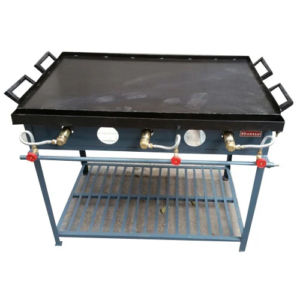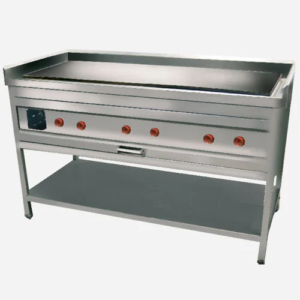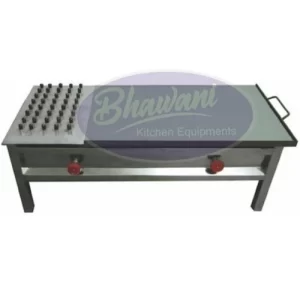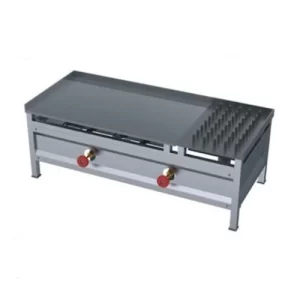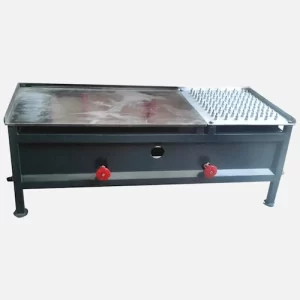Commercial Kitchen Equipment
-
₹18,000.00
-
SS Chapati Plate Puffer
Material SSLPG Consumption 2 Kg Per HourType GasIs It Portable Portable₹8,160.00 -
Stainless Steel Chapati Puffer
Model CPTMaterial Stainless SteelWeight 150 Kg (Approx)Automation Grade Manual₹38,400.00 -
Stainless Steel Puffer Chapati Plate
Usage/Application Hotel, Restaurant, Out Door Catering, etcMaterial Stainless SteelDimension 900 x 375 x 250₹11,520.00 -
Iron SS Chapati Puffer
Material ironModel Name/Number large sizeCapacity 100-150 chapaties at a timeWeight upto 80 Kg₹7,200.00 -
SS,MS Chapati Roasting Plates, Chapati Puffer
Usage/Application RestaurantCapacity 9 Pcs At A TimeMaterial SS, MS₹12,480.00 -
Commercial Manual Electric Capati Puffer
Usage/Application CommercialCapacity as per sizeDesign Type HorizontalMaterial Steel₹11,520.00
Introduction to Commercial Kitchen Equipment
In the fast-paced world of food service, having the right commercial kitchen equipment is vital for efficiency, productivity, and overall success. Whether you are running a restaurant, catering business, or any food-related enterprise, the quality and functionality of your kitchen equipment can significantly impact your operations. This guide will explore various types of commercial kitchen equipment, their importance, and frequently asked questions (FAQs) to help you make informed purchasing decisions for your e-commerce website.
Types of Commercial Kitchen Equipment
Commercial kitchen equipment encompasses a wide range of appliances designed to facilitate cooking, food preparation, storage, and serving. Below are some essential categories of commercial kitchen equipment:
1. Cooking Equipment
Cooking equipment is fundamental to any commercial kitchen. This category includes:
- Ovens: Essential for baking and roasting, ovens come in various types such as convection, combi, and pizza ovens.
- Ranges: These include gas or electric ranges that provide stovetop cooking capabilities.
- Grills: Ideal for grilling meats and vegetables, grills can be gas or electric.
- Fryers: Deep fryers are crucial for preparing fried foods quickly and efficiently.
2. Refrigeration Equipment
Proper refrigeration is critical for food safety. Key refrigeration equipment includes:
- Refrigerators: Commercial refrigerators are larger and more robust than residential models.
- Freezers: Essential for long-term storage of perishable items.
- Walk-in Coolers: These large units allow for bulk storage of ingredients.
3. Food Preparation Equipment
Food preparation equipment streamlines the cooking process. This category includes:
- Mixers: Stand mixers are vital for baking and mixing ingredients.
- Food Processors: Useful for chopping, slicing, and dicing ingredients quickly.
- Slicers: Essential for uniform slicing of meats and cheeses.
4. Serving Equipment
Serving equipment enhances the presentation and efficiency of food service. Key items include:
- Buffet Warmers: Keep food at optimal serving temperatures during events.
- Chafing Dishes: Ideal for catering services to serve hot dishes.
- Dispensers: For sauces, condiments, or dry goods.
5. Cleaning Equipment
Maintaining cleanliness in a commercial kitchen is vital for health standards. Important cleaning equipment includes:
- Dishwashers: Commercial dishwashers are faster and more efficient than home models.
- Sinks: Handwashing sinks must be separate from food prep sinks to comply with health regulations.
6. Smallwares
Smallwares refer to the essential tools that assist in food preparation and cooking. This includes:
- Cutlery: Knives of various sizes for different cutting tasks.
- Cookware: Pots, pans, and baking sheets used in cooking.
- Utensils: Spatulas, ladles, tongs, and other tools necessary for food handling.
Importance of Quality Commercial Kitchen Equipment
Investing in high-quality commercial kitchen equipment is crucial for several reasons:
- Efficiency: Quality equipment operates more efficiently, allowing staff to work faster and serve customers promptly.
- Durability: Commercial-grade appliances are built to withstand heavy use over time without frequent breakdowns.
- Safety: Properly designed equipment reduces the risk of accidents in the kitchen environment.
- Food Quality: High-quality cooking appliances ensure that food is prepared consistently and at the correct temperatures.
Selecting the Right Commercial Kitchen Equipment
When selecting commercial kitchen equipment for your e-commerce site, consider the following factors:
1. Type of Cuisine
Different cuisines may require specialized equipment; understanding your target market will help you choose appropriate products.
2. Space Constraints
Evaluate the available space in your kitchen to ensure that the selected equipment fits comfortably without hindering workflow.
3. Budget
Determine your budget before shopping; while it’s important to invest in quality equipment, there are options available at various price points.
4. Brand Reputation
Choose reputable brands known for their reliability and customer service; this can save you time and money on repairs down the line.
5. Energy Efficiency
Opt for energy-efficient models that can reduce utility costs over time while also being environmentally friendly.
Frequently Asked Questions (FAQs)
1. What is commercial kitchen equipment?
Commercial kitchen equipment refers to appliances specifically designed for use in restaurants, catering services, or other food service establishments. This includes cooking appliances, refrigeration units, food preparation tools, serving items, and cleaning devices.
2. How do I choose the right commercial kitchen equipment?
Consider factors such as the type of cuisine you will be serving, available space in your kitchen, budget constraints, brand reputation, and energy efficiency when selecting commercial kitchen equipment.
3. Is it better to buy new or used commercial kitchen equipment?
While new equipment often comes with warranties and the latest features, used equipment can be a cost-effective option if purchased from reputable dealers who ensure quality standards.
4. How often should I maintain my commercial kitchen equipment?
Regular maintenance is essential; schedule routine checks based on manufacturer recommendations—typically every six months to a year—to ensure optimal performance and longevity.
5. Can I finance my commercial kitchen equipment purchase?
Many suppliers offer financing options or leasing plans that allow businesses to acquire necessary equipment without upfront full payment.
6. What safety standards should I be aware of?
Ensure that all commercial kitchen equipment complies with local health department regulations regarding safety standards to avoid fines or closures.
Conclusion
Choosing the right commercial kitchen equipment is a critical step towards establishing a successful food service business. By understanding the different types of equipment available and considering factors like efficiency, durability, safety, and budget constraints, you can make informed decisions that will enhance your operations and customer satisfaction.

